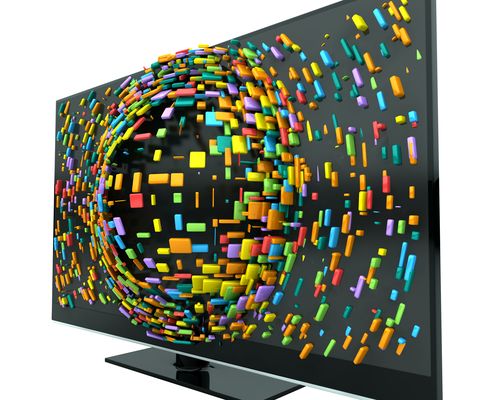HISPASAT makes the first transmissions of the second generation of 3D TV
- Hispasat 1E satellite retransmits, free-to-air, JEDI1 (Just Explore DImensions European project) channel, which delivers second-generation 3DTV content. This is the world's first demonstration of this system, compatible with the MVC (Multiview Video Coding) format
- The company currently works to boost the introduction of 3D television at home and to develop the technology to enjoy higher quality 3D content without glasses in the future
Madrid, July 4, 2012. – HISPASAT, the Spanish satellite communications operator, has made the world's first demonstration of the JEDI television channel in 3D compatible with the MVC (Multiview Video Coding) format. With this format it’s possible to transmit the same content in HD (high definition) and 3D Full HD on the same signal.
Until now, transmitting a channel in 3D requires the use of a format called "Frame Compatible” which makes use of the existing HD infrastructure. To do so, the resolution of the left and right views is reduced and they are placed side by side (or top and bottom) in order to simulate a normal HD image. The specification of this transmission mode was approved by the DVB (Digital Video Broadcasting global standardization forum) in February 2011 (DVB-3DTV Phase1). The JEDI consortium made the first transmission fully compatible with this specification in March of that year and, since then, keeps the channel free-to-air available across Europe via Hispasat 1E satellite (frequency 10810 MHz, Pol H).
Since then progress has been made in the project development and, during the final evaluation of JEDI in Caen (France) last June 19, 2012, the first world-wide broadcast of a second-generation ("Service Compatible") 3D TV channel was made as part of the project results demonstration, obtaining a very positive assessment. The test was conducted covering the entire value chain: from live recording using 3D cameras, encoding and decoding (both for contribution and distribution), to satellite transmission and reception on the TV.
This new format provides compatibility between HD and 3D, so that current receivers are able to extract the HD signal, while an MVC compatible receiver will be able to present an HD or 3D image depending on the capabilities of the display.
This technology provides two key advantages: it optimizes the use of bandwidth, since it avoids the current situation in which two channels ("simulcast") are required to transmit the same content in HD and 3D ("simulcast"), and also allows for a 3D Full HD quality, improving user experience of the 3DTV.
Architecture and participants in the development of the JEDI 3DTV “Service Compatible” Channel
HISPASAT manages all activities related to the satellite demonstrator in the JEDI consortium. The goal in the coming months is to implement the signaling defined in the DVB-3DTV Phase2a specification which, is under development within DVB group, keeping an open channel available across Europe to serve as platform for experimentation and validation of the next generation of 3DTV.JEDI project has worked on the study and definition of all the elements necessary to set-up end-to-end high quality stereoscopic 3DTV services, and in evaluating its quality and user acceptance. JEDI activities started in 2010 with the aim of gaining a better understanding of the various formats and technologies related to 3DTV and of how 3DTV will evolve and develop for consumers. JEDI belongs to the European Research platform ITEA 2, EUREKA cluster programme Σ! 3674, part of the Eureka European initiatives.
The project objectives have been driven by HISPASAT initiative to create the JEDI channel and the provision of the space segment in Hispasat 1E satellite, launched in late 2010, which has one of the most powerful satellite coverage over Europe and North Africa.
Pace is the project coordinator, and along with HISPASAT there are several national and European partners. The other Spanish partners of JEDI are: Alcatel-Lucent, D4D, TSA, SAPEC, Universidad Politécnica de Madrid and University of Zaragoza, coordinated by Planet
Media. The European partners are: Barco, Philips, Videohouse, VRT, NDS, NXP, Technicolor, University of Nantes, Trinnov, Thomson Video Networks, TELENET and VITEC.
This project consolidates HISPASAT commitment with 3DTV, a technology in which it works since 2008. Since then, HISPASAT Group has participated in various innovation initiatives that have helped to achieve important milestones in the development of 3DTV in our country.
Currently, the company works to boost the introduction of 3D television at home, and to develop the technology to enjoy higher quality 3D content without glasses in the future. HISPASAT also actively collaborates in the standardization process of the system in forums such as the DVB and the Forum for Advanced Media in Europe, currently focused on 3DTV and connected TV.
HISPASAT is also working on various initiatives for the development of Ultra High Definition Television, which multiplies HD resolution by 16, significantly improving user experience. In this area, the primary goal and objective of HISPASAT is to develop and validate solutions that allow the commercial viability of the diffusion of such content.
About HISPASAT Group
HISPASAT Group is formed by companies with presence in Spain and Latin America, where the Brazilian HISPAMAR operates the Amazonas satellite fleet. The Group is leader in the diffusion and distribution of content in Spanish and Portuguese, including the transmission of important Direct to Home (DTH) digital platforms and High Definition Television (HDTV). HISPASAT is one of the world's largest companies by revenue in its sector, and the main communication link between Europe and America.



